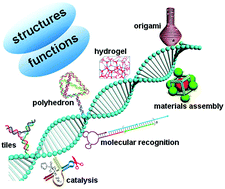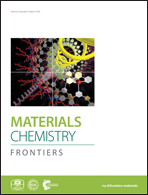Self-assembled DNA nanomaterials with highly programmed structures and functions
Abstract
Long admired as the repository of genetic information, DNA has more recently been exploited as a powerful material for self-assembly. Taking advantage of the specificity and programmability of the Watson–Crick base-pairing principle, DNA is able to form diversiform nanostructures and nanomaterials. More importantly, the assembled DNA nanomaterials can be modulated at nanometer spatial resolution with designable structures and functions. Such nanoscale precision endows DNA nanomaterials with well-defined orientations, spacings, stereo-relationships, and even optimized interactions with biomolecules, contributing to a revolution in the development of materials sophistication. Benefiting from these structural and functional properties, DNA nanomaterials have found a wide range of applications in materials science, analytical science, and biomedicine. Here, we summarize the recent progress in the design and applications of DNA nanomaterials which possess intriguing structures and functions, with a highlight on three kinds of important DNA nanomaterials including DNA tetrahedrons, DNA hydrogels and functional DNA nanomaterials. Finally, some of the current challenges are proposed in the design and applications of DNA nanomaterials, and we also provide our understandings of the prospects of several DNA nanomaterials, aiming to motivate future multidisciplinary and interdisciplinary research.

- This article is part of the themed collections: 2018 Materials Chemistry Frontiers Review-type Articles, Celebrating Excellence in Research: Women at the Frontiers of Chemistry and 2017 Emerging Investigators by MCF


 Please wait while we load your content...
Please wait while we load your content...